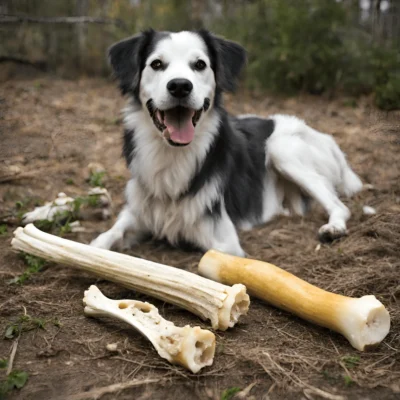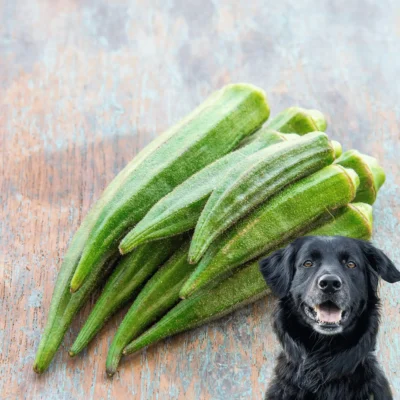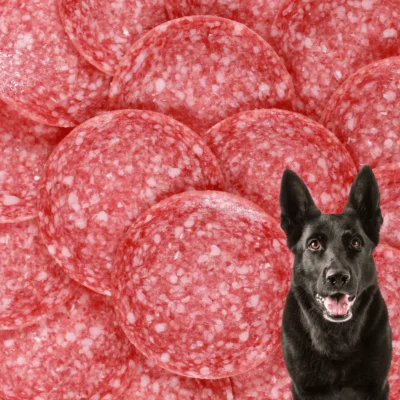Marrow Bones has long been celebrated as a natural and nutritious treat, providing a tasty chewing experience and potential health benefits. As we delve into the world of canine nutrition, the debate surrounding marrow bones for dogs piques curiosity and raises concerns among pet owners. The big question is: Are marrow bones safe for your furry friend? Join us as we explore the intricacies of this nutrient-rich delight to ensure the safety and well-being of your cherished four-legged companion.
In this article, we explore whether dogs can safely enjoy marrow bones. We’ll delve into the pros and cons to help you decide whether marrow bones are a suitable treat for your canine companion. We’ll also discuss how often you should give your dog marrow bones.
Here are the topics we will discuss in this blog post:
- What are marrow bones?
- Why should you avoid giving your dog cooked bones?
- Are raw marrow bones good for dogs?
- Advantages of raw marrow bones
- Disadvantages of raw marrow bones
- Can you give your dog beef marrow bones?
- How often can your dog enjoy marrow bones?
- How long can my dog chew on a marrow bone?
What are Marrow Bones?

Marrow bones refer to the long, tubular bones containing the soft, fatty tissue called marrow. These bones are typically sourced from large animals, such as beef or lamb, and they are often available in butcher shops or as by-products of meat processing. Marrow is found in the center of these bones and has a rich, gelatinous consistency.
Medulla ossium is a popular treat often given to dogs and is believed to offer various health benefits. Marrow, found within bones, is a fatty substance that contains stem cells, comprising both red and yellow marrow. When your dog digests marrow, their body produces red and white blood cells.
Beyond their cellular benefits, marrow bones also boast iron and an abundance of antioxidants, contributing to the overall well-being of your dog. These nutritional elements make marrow bones a tasty treat and potentially a wholesome addition to your furry friend’s diet, supporting their health in multiple ways.
Why Should You Avoid Giving Your Dog Cooked Bones?

Bones typically come in two forms: raw or cooked. However, it’s crucial to note that cooked bones should never be given to dogs for several compelling reasons—unless you enjoy frequent visits to the veterinarian! Here’s why:
- Cooked bones can splinter, turning into sharp fragments that pose a significant risk of trauma or even perforation to the mouth, throat, esophagus, stomach, or intestines.
- Dogs can break their teeth while chewing on hard, cooked bones.
- If your dog consumes cooked bones regularly, it may result in an unbalanced diet lacking essential nutrients.
- Cooked bones are often fatty, and excessive fat consumption can contribute to the development of pancreatitis in dogs, a painful and potentially serious condition.
- When swallowed, cooked bones are poorly digested, increasing the risk of intestinal obstruction.
- Bones with a sizable central hole can get stuck on the lower jaw as a dog eagerly tries to lick out the core!
To ensure the safety of your dog, it’s advisable to stick to raw or minimally processed bones. Raw bones are less likely to splinter, and the chewing action can provide dental benefits and mental stimulation and contribute to a balanced diet.
Are Raw Marrow Bones Safe for Dogs?

The answer is yes. Feeding raw marrow bones to dogs can be safe and even beneficial when approached with caution. Choose bones that are appropriate in size to prevent choking, supervise your dog during chewing sessions, and be aware of the potential for bacterial contamination, as raw bones can contain pathogens.
Additionally, avoid giving dogs cooked bones, which can splinter and cause harm. If your dog has specific health concerns or dietary restrictions, consult with your veterinarian before introducing raw bones to their diet.
Moderation is key to preventing digestive issues, and ongoing supervision ensures a positive chewing experience for your furry friend. Overall, when given responsibly and with consideration for your dog’s individual needs, raw marrow bones can be a safe and enjoyable addition to their diet.
Advantages of Raw Marrow Bones:

Raw bones offer some benefits compared to cooked ones. Raw bones are softer than cooked ones, reducing the risk of broken teeth. Small raw bones are less likely to splinter and are generally more easily digested than their cooked counterparts, lowering the risk of obstruction or trauma. Feeding raw marrow bones to your dog can offer several perks, including:
Nutrient Rich:
Marrow is rich in monounsaturated fats and omega-3 fatty acids, which are beneficial for heart health. It contains fat-soluble vitamins such as A and K2, important for immune function, vision, and bone health.
The vitamins and minerals present in marrow bones contribute to a healthy immune system, supporting the body’s ability to fight infections and illnesses. Marrow bones contain magnesium and potassium, which are vital for various physiological functions, including nerve function and muscle contraction.
Dental Health:
Chewing on raw or meaty marrow bones provides a natural abrasive action that helps remove plaque and tartar from a dog’s teeth. This chewing action can contribute to cleaner teeth and healthier gums.
Regular chewing on bones may help reduce bad breath in dogs by preventing the buildup of bacteria and food particles that contribute to unpleasant odors. Chewing on marrow bones engages a dog’s instinct to chew. This repetitive activity not only satisfies a dog’s urge to chew but also provides a calming effect, reducing stress and anxiety.
Calcium:
Marrow bones can be a source of calcium for dogs, and calcium plays a crucial role in their overall health. Calcium is a fundamental mineral for the development and maintenance of strong bones and teeth in dogs. It is an essential component of the bone matrix, providing structural support.
Calcium is a vital component in cell signaling and communication. It is involved in numerous cellular processes, including enzyme activation and the release of neurotransmitters.
Pet Enrichment:
Chewing on marrow bones provides a natural and enjoyable outlet for a dog’s instinctive chewing behavior. The repetitive motion engages their jaws and satisfies the urge to chew, offering mental and physical stimulation.
Chewing is a natural stress reliever for dogs. Marrow bones can provide a calming effect, helping to reduce anxiety and stress in dogs.
Gut Health:
Marrow bones, when cooked, release gelatin as the collagen in the bones breaks down. Gelatin is known for its gut-soothing properties. It can help coat and protect the digestive tract, potentially supporting dogs with sensitive stomachs.
The connective tissues and marrow in bones may contain natural enzymes that can aid in the digestion of nutrients. This can be extremely beneficial for dogs with digestive issues.
Disadvantages of Raw Marrow Bones:

While marrow bones can offer various benefits for dogs, it’s important to be aware of the potential perils and risks associated with bottom bones. Here are some:
Broken Teeth:
Some marrow bones, especially weight-bearing bones, can be extremely hard. When dogs chew on these hard bones, there is a risk of their teeth fracturing or breaking.
Dogs have different chewing styles, and some can be quite aggressive. Dogs that chew forcefully on bones, trying to break them into smaller pieces, are at a higher risk of sustaining dental injuries.
Splintering:
Splintering is a concern, especially with cooked bones or bones that are too hard, as they can break into sharp fragments that may pose a danger to a dog’s digestive tract. When dogs chew on bones, especially those that are brittle, splinters can break off and cause injuries, including cuts to the mouth, throat, or intestines.
Pancreatitis Risk:
Pancreatitis is an inflammation of the pancreas, and it can pose a risk for dogs, especially when it comes to their diet. Marrow, particularly from large bones, is rich in fat.
Consuming a large amount of fat in a short time can trigger pancreatitis in some dogs. Dogs with a history of pancreatitis or those predisposed to the condition may be more susceptible.
Bacterial Contamination:
Bacterial contamination is a potential concern associated with the use of marrow bones for dogs, particularly when it comes to raw bones. Marrow bones, especially those that are not properly handled or stored, can harbor bacteria such as Salmonella and E. coli, which can pose risks to both the dog and its human handlers.
Can You Give Your Dog Beef Marrow Bones?

Yes, it is generally safe to give your dog beef marrow bones as an occasional treat or chew toy. Beef marrow bones can offer dental benefits by helping to clean teeth and gums as your dog chews, and the marrow inside provides a source of healthy fats and nutrients. Beef marrow bones are often available at butcher shops or grocery stores.
Beef marrow bones contain essential nutrients, including healthy fats, vitamins (such as vitamins A and K), and minerals (such as phosphorus). Gnawing on bones provides mental stimulation for dogs, helping alleviate boredom and providing an enjoyable activity.
It’s crucial to ensure that they are given in moderation and in appropriate sizes to prevent choking hazards or other potential issues. Additionally, individual dogs may have different tolerances and dietary needs, so consulting with a veterinarian is advisable before introducing beef marrow bones into your dog’s diet.
How Often Can Your Dog Enjoy Marrow Bones?

It’s perfectly fine to treat your dog to beef marrow bones a few times a week or occasionally for a fun and healthy reward. However, it’s important to maintain balance in their diet. Adhering to the 10% rule is a good practice: ensure that their regular pet food constitutes about 90% of their daily caloric intake, while bones and treats make up the remaining 10% or less.
This approach helps prevent overconsumption of treats and ensures that your dog receives a well-rounded and nutritionally balanced diet. Always monitor your dog while they enjoy their bones, and consult with your veterinarian
How Long Can My Dog Chew on a Marrow Bone?
Allowing your dog to chew on a marrow bone for up to half an hour is generally safe, as these bones provide dental benefits and a tasty experience. However, some dogs may enthusiastically engage with their delicious beef marrow bone and might benefit from taking a break after a little while.
While these bones are long-lasting and safe, it’s a good idea to ensure your dog doesn’t overindulge in a single session. You can always give the bone back after a short break. A helpful tip is to freeze the marrow bone if you plan to offer it to your pup over several days, providing a refreshing and enjoyable treat each time.
Final Thought:
In conclusion, marrow bones can be a delightful and beneficial addition to your dog’s diet when approached with caution and responsibility. Raw marrow bones, in particular, offer numerous advantages, including essential nutrients for overall health, dental benefits, mental stimulation, and potential support for gut health. However, it’s crucial to be aware of the potential risks, such as dental injuries, splintering, pancreatitis, and bacterial contamination.
Avoiding cooked bones is essential, as they can pose serious health risks to your furry friend. Opting for raw or minimally processed bones is a safer choice, as they are less likely to splinter and can contribute to a balanced diet when given in moderation.
When it comes to beef marrow bones, they are generally safe for dogs as an occasional treat or chew toy. It’s important to adhere to the 10% rule, ensuring that treats and bones make up only a small portion of your dog’s overall caloric intake. if your dog has specific health concerns or dietary restrictions, always consult with your veterinarian
Ultimately, with proper precautions and mindful consideration of your dog’s individual needs, bottom bones can contribute to your furry friend’s well-being, happiness, and overall enjoyment of life.
FAQs:
Can dogs safely consume marrow bones?
Yes, dogs can safely consume marrow bones as part of their diet. Marrow bones are a natural source of nutrients like calcium, phosphorus, and minerals, which contribute to your dog’s overall health.
Are all types of bones safe for dogs?
Not all bones are safe for dogs. It’s important to choose large, raw bones with plenty of marrow rather than cooked bones, which can splinter and cause harm. Avoid small bones, as they may pose a choking hazard.
Can puppies have marrow bones?
Yes, puppies can enjoy marrow bones, but it’s crucial to select bones that are size-appropriate for their smaller jaws. Additionally, monitor their chewing to prevent any potential choking hazards or tooth damage.
What signs indicate that a dog is having difficulty with a marrow bone?
If your dog experiences vomiting, diarrhea, lethargy, or difficulty passing stools after consuming a marrow bone, consult your veterinarian. These symptoms could indicate an issue, and prompt medical attention is crucial.
How do I store marrow bones for my dog?
Store unused marrow bones in the refrigerator or freezer to prevent spoilage. Thaw the frozen bones in the refrigerator before giving them to your dog. Dispose of bones that have become small or brittle to avoid choking hazards.












